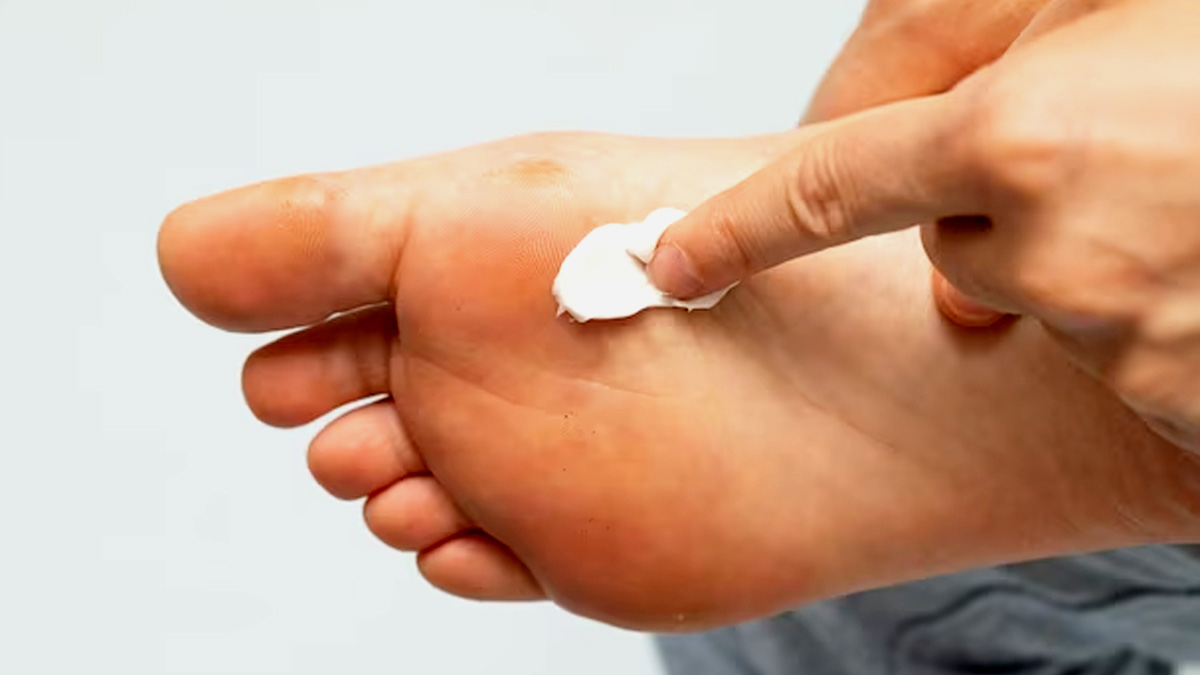
Are you suffering from a foot ulcer that is not healing at all? Have you ever been suspicious of having diabetes? If not, it is time you get yourself evaluated by a medical professional. High blood sugar levels can damage blood vessels and nerves, leading to poor circulation and reduced sensation in the feet. That's when an ulcer develops. Speaking with the OnlyMyHealth team, Dr Vimal Upreti, Additional Director, Department of Diabetes & Endocrinology, Jaypee Hospital, discusses ways to identify diabetes-related foot ulcers.
Also Read: How Diabetes Can Affect Different Parts Of The Body
Diabetes Can Affect Your Foot

“Diabetes affects the foot in several ways,” said Dr Upreti, adding, “High blood sugar levels can lead to nerve damage, known as peripheral neuropathy, which can cause a loss of sensation in the feet. It may also cause deformities in the foot making it more prone to wounds.” Additionally, he explains that diabetes can impair blood circulation, making it harder for wounds to heal. Even minor injuries or cuts can go unnoticed and develop into ulcers, he added.
According to research, about 5% of patients with diabetes mellitus develop foot ulcers and 1% end up with an amputation. As per a study published in the New England Journal of Medicine, the annual incidence of diabetic foot ulcer worldwide is between 90 lakh to 2.6 crore.
How To Tell If A Non-Healing Foot Ulcer Is Diabetes?

Dr Upreti said, “A non-healing foot ulcer can be a sign of diabetes, especially if it persists for a prolonged period. If you have an ulcer on your foot that doesn't show signs of improvement within a few weeks, it's important to seek medical attention.”
“An endocrinologist can perform a thorough examination and order tests to determine if diabetes is the underlying cause. He/she may also assess your medical history, family history, and evaluate your blood sugar levels,” he added.
A diabetic foot can cause other symptoms including:
- Tingling, burning, or pain in your feet
- Loss of sense of touch or ability to feel heat or cold
- A change in the shape of your feet over time
- Loss of hair on your toes, feet, and lower legs
Also Read: Hyperglycemia: Symptoms, Diagnosis and Treatment
Other Symptoms To Watch Out For

Apart from non-healing foot ulcers, there are other symptoms associated with diabetes that you should watch out for. These include:
- Increased thirst
- Frequent urination
- Unexplained weight loss
- Fatigue
- Blurred vision
- Slow wound healing
- Recurrent infections
“If you experience any of these symptoms along with a non-healing foot ulcer, it's crucial to consult an endocrinologist for proper evaluation and diagnosis,” the doctor urged.
The Next Step
According to Dr Upreti, early detection and management of diabetes are essential to prevent complications. “If you are diagnosed with diabetes, your healthcare team can help you develop a treatment plan to control your blood sugar levels and promote wound healing. They may recommend lifestyle changes, medication, wound care techniques, and regular foot examinations to prevent further complications,” he said.
“Remember, it's always better to seek medical advice and get a proper diagnosis rather than self-diagnosing or ignoring potential signs of diabetes,” the doctor concluded.
How we keep this article up to date:
We work with experts and keep a close eye on the latest in health and wellness. Whenever there is a new research or helpful information, we update our articles with accurate and useful advice.
Current Version